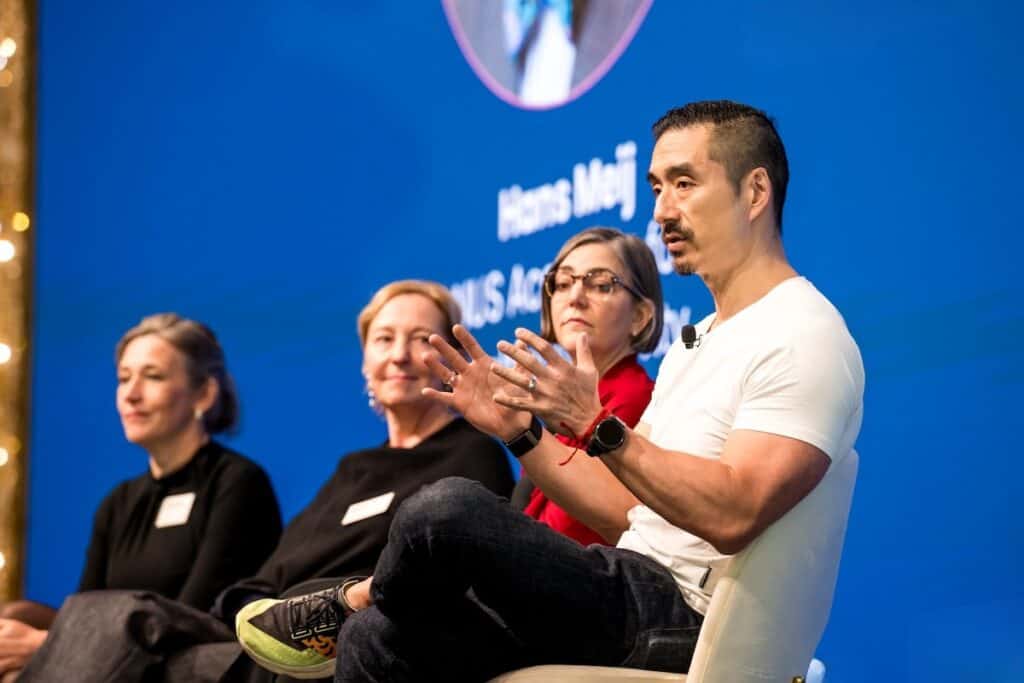Last updated on December 12, 2023
Yat Siu, Co-Founder of Animoca Brands, says web3 has the potential to transform education from the bottom up. Read more in our Future of EdTech report.
Education is knowledge, but it’s what you do with that knowledge – when you learn something and apply it through labour – that gives you value.
With web3, your knowledge and educational ideas become capital assets: you can own your ideas, prove that you were the first person to come up with them, and monetise them.
With Web3, Teachers Become Creators
Typically, wealth creation is only possible with sizable capital assets, because the cost of creating the asset, hiring lawyers, and drafting contracts is high. With blockchain, you can create the same capital asset structure for anything.
By turning your asset into an NFT, you generate the IP, contractual rights, and dictate where the money goes in a single transaction. That means a teacher can sell their educational content, which can then be sold on to generate long-term royalty returns. That’s the power of having ownership.
We think of creators as being musicians or actors, not teachers, but teachers are probably the largest group of creators out there. Now that NFTs provide teachers with a way of owning a licence and scaling up the reach of their content, they can become creators in the truest sense of the word.
Education Revolution!
In our current education system, centralised organisations have the power and educators are trapped in their systems; even if educators have better ideas, they don’t have the potential for capital formation.
With web3, teachers will be able to make more money, which will incentivise them to create better content, which will encourage investors to invest in them.
That will trigger a revolution in teaching and learning. Educators will have the opportunity to build their reputations on chain instead of being constrained by central control; more revenue generated by educational content will go directly to its creators; and teachers will be able to easily choose content from different sources and teach in multiple institutions.
AI provides tools that make learning more efficient, but we have to provide incentives for people to create better learning content to keep up with AI – and we can’t do that if teachers can’t generate value from the assets they create.
Learning with Consequence
Humans have always learnt through play, and the metaverse is an expansion of that. In the same way that YouTube evolved from an entertainment platform into the biggest learning channel in the world, the people building the metaverse need to understand how they’re delivering educational value.
In the physical world, what we teach means more because there are consequences. When you’re winning or losing, the stakes and outcomes are real. Failing an exam or botching a thesis can have serious consequences.
Until recently, in the virtual world you had training wheels on all of the time; you couldn’t lose something critical because you never really owned it to begin with. Now that blockchain and NFTs provide that ownership, the things you’re interacting with become more real because they have real value attached to them – and that’s where we’ll see the acceleration of learning happen.
The Resistance
This education revolution won’t be easy or straightforward. Consider the humble calculator. Educational institutions used to strenuously resist the use of calculators by students because it messed up their examination systems and rendered irrelevant all learning based on memorising arithmetic.
The situation with web3 now is similar; we’re talking about a paradigm shift, a disruption, and some educational institutions are going to resist this change.
There will also be resistance from teachers who don’t yet understand that this shift actually, for once, works in their favour. But, as long as you can build it from the ground-up, a movement can overcome this resistance. When you show that the outcomes are better for the people involved, others will naturally follow.
Making a Web3 Movement
When you enhance something with technology, your impact is incremental. When you start a movement, you’re starting a revolution.
If you’re trying to change something, think of what makes what you’re doing a movement; which pain points you’re solving that make educators and students adopt what you’re doing, not because it’s easy, but because they believe in it.
Web3 entrepreneurs need to ensure that the billions of people who’ve been excluded from the financial system understand the value of money, property, and what ownership of property means. That’s the big shift.
Teachers, who are broadly speaking a labour class with few capital assets, are in the same boat.
Yat Siu’s Animoca Brands is a global leader in gamification and blockchain with a portfolio of over 400 investments and a mission to advance digital property rights and contribute to building the open metaverse.
Animoca Brands was valued at almost $6 billion in 2022, after a $110m funding round, and recently raised an additional $20m to develop its metaverse project, the Mocaverse.
Animoca Brands is also a launch partner of Open Campus, a community-led protocol for educators, content creators, parents, and students. The company committed to contribute to the Open Campus’ $10m Global Educators Fund to supplement standard education curricula through the use of web3 technologies and communities.
Download our Future of EdTech report for more insights from top edtech founders. Plus, discover the 40 edtech startups to watch!
 All Posts
All Posts


